Neda Aria's Blog, page 12
February 14, 2023
Transgressive Erotic Literature: An Exploration of Sexual Taboos - VALENTINE SPECIAL
Transgressive erotic literature is a genre of fiction that pushes the boundaries of conventional attitudes towards sexuality and relationships. This genre explores unconventional and taboo sexual themes, relationships, and power dynamics through explicit and graphic depictions of sexual acts. While it is not for everyone, transgressive erotic literature is a genre that is both controversial and thought-provoking, and provides a space for writers to explore taboo subjects in a way that is both creative and challenging. In recent years, the genre of transgressive erotica has been gaining popularity as more and more readers seek to explore taboo and forbidden desires. This blog post will take a closer look at my upcoming duology novel, "Lust in Paris", which promises to be a bold and captivating tale of a married woman's journey into the world of fetish.
What is Transgressive Erotic Literature?
Transgressive fiction vs. dark romance
Motifs of Transgressive Erotic
Symbols of Transgressive Erotic
Characters of Transgressive Erotic
Themes of Transgressive Erotic
The Style of Transgressive Erotic Literature
The Difference between Erotica and Pornography
The Controversy Surrounding Transgressive Erotic Literature
 What is Transgressive Erotic Literature?
What is Transgressive Erotic Literature?"Transgressive" can refer to literature that pushes the boundaries of conventional norms, including in terms of sexual content. "Transgressive erotic novels" are therefore novels that explore sexual topics and themes that are considered taboo or outside of societal norms. Transgressive erotic literature is characterized by complex and multi-dimensional characters who serve as vehicles for exploring taboo subjects such as fetishes, BDSM, power play, psychological and physical abuse, and more. The genre often challenges societal norms and expectations surrounding sexuality and often depicts explicit and graphic sexual acts that may be considered taboo. The goal of transgressive erotic literature is not just to shock and provoke, but also to explore these taboo subjects in a nuanced and thought-provoking way.
Transgressive fiction vs. dark romance"Transgressive fiction" and "dark romance" are two literary genres that are sometimes used interchangeably, but there are some key differences between the two. Transgressive fiction often contains elements of shock and transgression, including themes of violence, crime, and taboo sexuality. Transgressive fiction can be considered a sub-genre of avant-garde or experimental literature, and it can be used to challenge societal norms and to question the status quo. Dark romance, on the other hand, is a sub-genre of romance fiction that explores dark, sometimes taboo, themes such as psychological abuse, BDSM, and power dynamics. While it may contain elements of transgression, dark romance is primarily concerned with the exploration of love, desire, and relationships. Unlike transgressive fiction, which is often intentionally disturbing or provocative, dark romance seeks to evoke a range of emotions, including fear, sadness, and, ultimately, love and desire. Transgressive erotic book examples:

"The Story of O" by Pauline Réage - a classic work of transgressive erotic literature that explores themes of BDSM, dominance and submission, and power dynamics. It is a classic example of transgressive erotica. The novel was first published in France in 1954 and has since become a cornerstone of the genre. The book explores themes of power, submission, and sexual fetishism and is considered one of the most explicit and graphic depictions of BDSM in modern literature. The plot of the novel revolves around a young woman named O who is taken to a secret château where she is trained in the art of BDSM and becomes the sexual plaything of various men. The book follows her journey as she submits to her desires and becomes increasingly immersed in the world of fetish, ultimately leading to a climactic finale that is both shocking and thought-provoking.
The novel is considered transgressive for its frank and unapologetic depiction of BDSM, a topic that was taboo at the time of its publication. It is a testament to the enduring appeal of the genre and the desire for readers to explore the darker and more taboo aspects of human sexuality.
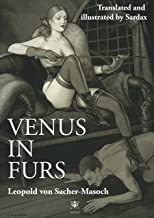
"Venus in Furs" by Leopold von Sacher-Masoch - a novel that explores the concept of masochism and the power dynamics of sexual relationships. "Venus in Furs" is a novel by Leopold von Sacher-Masoch, first published in 1870. Like "The Story of O," it is considered a classic of transgressive erotica and is known for its frank and graphic depictions of BDSM and sexual fetishism. The novel follows the story of a man named Severin von Kusiemski who becomes infatuated with a woman named Wanda von Dunajew. He eventually becomes her slave and enters into a contract with her, in which he agrees to serve her every desire in exchange for the experience of being dominated. The book explores themes of power, domination, and submission, and is considered one of the earliest and most influential works of BDSM literature. Its frank and unapologetic depiction of BDSM was groundbreaking for its time, and it has since become a cornerstone of the transgressive erotica genre.
Like "The Story of O," "Venus in Furs" is not for the faint of heart, and its explicit nature and graphic depictions of BDSM are not suitable for all readers. However, for those who are interested in exploring the darker and more taboo aspects of human sexuality, it remains a must-read classic of the genre.
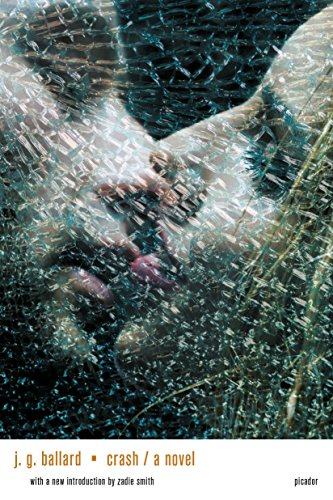
"Crash" by J.G. Ballard - a novel that explores the intersection of sexuality and violence, and the fetishization of car crashes. The book is a work of transgressive fiction and is known for its explicit and graphic depictions of fetishism, sexual obsession, and the collision of technology and the body.
The plot of the novel revolves around a group of people who are sexually aroused by car crashes and engage in dangerous and illegal car-crash related activities. The book explores the intersection of technology and the human body, as well as the desire for extreme experiences and the search for new forms of sexual excitement.
"Crash" is considered transgressive for its explicit and graphic depictions of fetishism and its unconventional portrayal of sexuality. It is a dark and disturbing exploration of the limits of human desire and the consequences of fetishistic obsession.
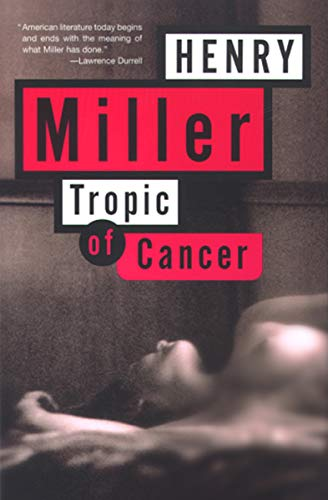
"Tropic of Cancer" by Henry Miller - a novel that explores themes of sexuality and sexual freedom, and that was considered controversial at the time of its publication due to its explicit content. It is considered a landmark work of transgressive fiction and is known for its explicit and graphic depictions of sexuality, as well as its unconventional portrayal of the human experience.
The book is a semi-autobiographical work that follows the experiences of the narrator, a writer living in Paris in the 1930s, as he navigates his relationships with various women, his struggles with poverty and depression, and his search for meaning and fulfillment.
"Tropic of Cancer" is considered transgressive for its frank and unapologetic depictions of sexuality and its unconventional portrayal of the human experience. The book is a rebellious and avant-garde exploration of the limits of human desire, and its graphic and explicit nature makes it a controversial and polarizing work.
Motifs of Transgressive EroticIn literature, a motif is a recurring theme, image, or symbol that helps to reinforce a central idea or theme in a work of fiction. In transgressive erotic literature, some common motifs include:
Power Dynamics: The exploration of power and control in sexual relationships, including depictions of dominance and submission, and the dynamics of psychological abuse. Taboos: The depiction and exploration of taboo or unconventional desires, such as those related to sexuality, gender, and relationships. The Body: The representation of the body and its role in sexual desires, relationships, and transgression, often through graphic or explicit depictions of sexual acts. Transgression: The exploration of societal norms and expectations, and the breaking of these norms through acts of transgression, often related to sexuality and relationships. The Subconscious: The representation of unconscious desires, fears, and fantasies, often through the use of dream-like or surreal imagery. Explorations of Identity: The exploration of the self and the construction of identity, often through the depiction of characters who challenge societal norms and expectations.These motifs are used to reinforce the central themes of transgressive erotic literature and to create a deeper, more meaningful exploration of taboo and controversial topics. They also help to create a sense of consistency and coherence throughout the work, and to add depth and complexity to the characters and their experiences.
Symbols of Transgressive EroticIn literature, symbols are objects, characters, or images that represent something beyond themselves, often serving as visual representations of abstract ideas or themes. In transgressive erotic literature, some common symbols include:
Chains: Represents bondage, slavery, or domination, and often symbolizes the power dynamics of sexual relationships. Whips: Represents punishment, pain, or control, and often symbolizes the dynamics of BDSM relationships. Veils: Represents the hiding of one's true self, or the concealment of desires and motivations, often symbolizing the taboo or unconventional desires depicted in the work. Mirrors: Represents self-reflection, self-discovery, and the exploration of identity, often symbolizing the characters' journey of self-discovery and their breaking of societal norms. Masks: Represents disguise, deception, or the hiding of one's true self, often symbolizing the characters' attempts to hide their true desires or motivations from others. Keys: Represents unlocking, freedom, or access, often symbolizing the characters' journey towards liberation or their breaking free from societal norms and expectations.In the context of my novel, symbols could play an important role in exploring themes of sexuality, power dynamics, and societal norms and expectations. The following are some symbols that could be used in my novel:
Chains or ropes: These symbols can represent the power dynamics in BDSM relationships, where one person takes on a dominant role and the other takes on a submissive role. Whips or floggers: These symbols can represent the physical aspect of BDSM relationships, where one partner is punished or disciplined by the other. Mask or blindfolds: These symbols can represent the anonymity and the relinquishing of control that is often involved in BDSM relationships. Red: This color can symbolize desire, passion, and lust, as well as danger and taboo. Keys: These symbols can represent the power dynamics in BDSM relationships, where one person holds the key to unlocking the other's desires and experiences. Blood: This symbol can represent the taboo and the dangerous aspects of the main character's relationship with the billionaire with a blood fetish, as well as the power dynamics that exist within it.These symbols can be used to add depth and meaning to my novel, and they can help to explore the themes that you are interested in examining.
Characters of Transgressive EroticIn transgressive erotic literature, characters are often complex and multi-dimensional, and may challenge societal norms and expectations in their desires, motivations, and behaviors. Some common character types in transgressive erotic literature include:
The Submissive: A character who takes on a submissive role in sexual relationships, often exploring the power dynamics of BDSM relationships. The Dominant: A character who takes on a dominant role in sexual relationships, often exploring the power dynamics of BDSM relationships. The Transgressor: A character who challenges societal norms and expectations, often through their sexual desires, motivations, or behaviors. The Taboo Lover: A character who engages in unconventional or taboo sexual relationships, often exploring the boundaries of societal norms and expectations. The Victim: A character who experiences psychological or physical abuse or exploitation in a sexual relationship, often exploring the darker aspects of power dynamics in sexual relationships. The Explorer: A character who is on a journey of self-discovery, often through their exploration of unconventional or taboo sexual desires and relationships.These characters are often complex and multi-dimensional, with motivations and desires that may challenge societal norms and expectations. They serve as vehicles for exploring the themes and ideas central to transgressive erotic literature, and may represent the breaking of societal norms or the questioning of conventional attitudes towards sexuality and relationships. In my duology, the main character could be classified as both an "Explorer" and a "Transgressor."
As an "Explorer," the main character is on a journey of self-discovery, and through her work at the fetish sex club, she begins to explore her own desires and motivations. This character type often embarks on a sexual journey, and through this exploration, they gain a deeper understanding of themselves and the world around them. As a "Transgressor," the main character challenges societal norms and expectations, particularly through her sexual experiences. Her decision to work at the fetish sex club, and her subsequent relationship with the billionaire with a blood fetish, demonstrate her willingness to push the boundaries of what is considered socially acceptable. This character type is often rebellious and non-conformist, and they challenge the status qu o through their actions and desires.Themes of Transgressive EroticTransgressive erotic literature often explores themes that are considered taboo or unconventional, and that challenge societal norms and expectations. Some common themes in transgressive erotic literature include:
1. BDSM: Explores the dynamics of power and submission in sexual relationships, and may include elements of sadomasochism, bondage, and discipline.
2. Taboo Sexual Acts: Depicts sexual acts or desires that are considered unconventional or taboo, such as incest, bestiality, or pedophilia.
3. Violence: May explore the intersection of violence and sexuality, and may include graphic depictions of violence or sexual violence.
4. Psychological Abuses: Depicts relationships that involve psychological abuse, manipulation, and control, and may explore the power dynamics of such relationships.
5. Non-Monogamy: Depicts sexual relationships or practices that are outside the norms of traditional monogamy, such as polyamory or open relationships.
6. Gender and Sexuality: May challenge societal norms and expectations around gender and sexuality, and may include depictions of gender fluidity, transgender characters, or same-sex relationships.
In my novel, the following themes could be explored:
Power dynamics: The relationships in this duology could explore the power dynamics between partners, particularly in the context of BDSM relationships. Sexuality and desire: delve into the complexities of sexual desire, and how societal norms and expectations influence these desires. Society and norms: challenge societal norms and expectations, particularly in the context of sexuality and desire. Taboo and the forbidden: explore the boundaries of what is considered taboo or forbidden in society, particularly in the context of BDSM and fetish relationships. Self-discovery: main character's journey of self-discovery through her exploration of the fetish world could be a key theme in my novel. Love and relationships: The relationship between the main character and the billionaire with a blood fetish could be a central theme, exploring the dynamics of a unconventional and taboo relationship. Danger and exploitation: The darker aspects of the fetish world, such as exploitation and abuse, could also be explored as a theme in my novel.The Style of Transgressive Erotic LiteratureThe style of transgressive erotic literature is often graphic, surreal, poetic, provocative, dark, or experimental. The genre is characterized by a writing style that may be both graphic and poetic, and that aims to provoke, challenge, and explore. The genre is often written in a way that is both intimate and confrontational, and that seeks to spark conversation and challenge readers' assumptions about sexuality and relationships. The style of writing used in transgressive erotic literature can vary greatly, depending on the author's intent and the tone they wish to convey. Some common styles used in transgressive erotic literature include:
Graphic: The use of explicit and detailed descriptions of sexual acts and relationships, often with a focus on the physical and visceral aspects of sexuality. Surreal: The use of dream-like or surreal imagery and symbolism to explore unconscious desires and fantasies, often with a focus on exploring the psychological aspects of sexuality. Poetic: The use of lyrical or poetic language to explore the beauty and mystery of sexual relationships, often with a focus on the emotional and spiritual aspects of sexuality. Provocative: The use of controversial or provocative themes and ideas to challenge societal norms and expectations, often with a focus on the transgressive aspects of sexuality and relationships. Dark: The use of dark, brooding, or oppressive imagery and themes to explore the darker aspects of sexuality and relationships, often with a focus on psychological abuse or exploitation. Experimental: The use of unconventional or experimental narrative structures, themes, or imagery to explore the boundaries of societal norms and expectations, often with a focus on exploring unconventional or taboo desires and relationships.The style of writing used in transgressive erotic literature often reflects the themes and ideas being explored, and can play an important role in shaping the tone and atmosphere of the work.
The Difference between Erotica and PornographyIt is important for readers to understand the difference between erotica and pornography, as transgressive erotic literature often contains elements of both. Erotica is a genre that seeks to explore sexuality and relationships in a way that is both artistic and thought-provoking, while pornography is a genre that is focused solely on sexual gratification. Transgressive erotic literature, on the other hand, often contains elements of both erotica and pornography, and seeks to explore taboo subjects in a way that is both intimate and confrontational.
The Controversy Surrounding Transgressive Erotic LiteratureTransgressive erotic literature is a genre that is both controversial and thought-provoking, and it is not for everyone. The graphic nature of the genre may be triggering or offensive to some readers, and the subject matter can be disturbing. Some people believe that the genre perpetuates harmful attitudes towards women and reinforces stereotypes about BDSM and fetish culture. However, others argue that the genre provides a space for writers to explore taboo subjects in a way that is both creative and challenging, and for readers to consider these topics in a way that is both intimate and confrontational. By exploring these taboo subjects in a way that is both explicit and thought-provoking, transgressive erotic literature can help to challenge societal norms and expectations surrounding sexuality and relationships, and to spark conversation and promote change.
First book of Lust in Paris Duology will come out on Fenbruary 14th 2024. For cover reveal and pre-order follow my instagram. Comment below your opinion on transgressive erotic. What books have you read or written in this genre?
February 13, 2023
Breaking the Mold: Five Transgressive Novels for a Thought-Provoking Valentine's Day
Valentine's Day is often associated with flowers, chocolates, and romantic gestures, but for those like me, who seek a more unconventional and thought-provoking reading experience, I created a list of five transgressive novels that might make for an interesting alternative (don't forget to take a look at my comprehensive posts on transgressive female writers). From postmodern explorations of reality to feminist examinations of sexuality and liberation, these novels challenge societal norms and conventions, offering a unique perspective on love, desire, and the human condition. However, it's important to note that these novels contain graphic content and explicit themes, and may not be suitable for all readers.

Source: ,Queen of Hearts
The following list is my very personal recommendation for Valentine's Day. All offer a unique and unconventional take on themes related to love, desire, and relationships. Instead of the traditional, romantic portrayal of love often associated with Valentine's Day, these books explore the darker and more complex aspects of human relationships, delving into topics such as sexual submission, liberation, and desire.
If you're here, I assume you're one of those who seek a more thought-provoking and introspective reading experience. These transgressive novels can provide a fresh perspective on the themes of love and relationships, challenging societal norms and conventions in the process. By offering a different take on these familiar themes, these books provide an opportunity for readers to reflect on their own experiences and beliefs about love and relationships, making for a memorable and meaningful Valentine's Day reading experience. Emjoy the read!
1. The Crying of Lot 49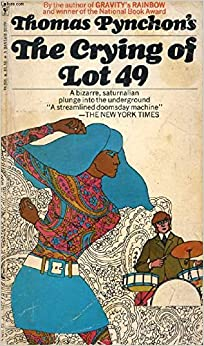
"The Crying of Lot 49" by Thomas Pynchon is a postmodern masterpiece that explores the complexities of modern society through the lens of paranoia, communication, and the nature of reality. The novel is set in a world where information is abundant but understanding is elusive, and the protagonist, Oedipa Maas, finds herself caught up in a mysterious conspiracy that blurs the lines between reality and fiction.
Pynchon's writing is truly a work of art, blending humor, satire, and existential philosophy in a way that keeps the reader constantly engaged. The characters are well-drawn and the narrative is full of twists and turns that keep the reader on edge, and the themes explored in the book are just as relevant today as they were when it was first published.
One of the most impressive things about this novel is the way it seamlessly integrates multiple genres and styles, from detective fiction to science fiction to absurdist humor, to create a unique and captivating reading experience. The writing is dense and often requires close attention, but the rewards are rich, as the reader is transported to a world that is both strange and familiar. Overall, "The Crying of Lot 49" is a must-read for anyone interested in postmodern literature, and is sure to challenge and provoke readers in equal measure. Whether you're a seasoned reader of Pynchon's work or a newcomer to his writing, this novel is sure to leave you with a new perspective on the world around you.
2. The Story of O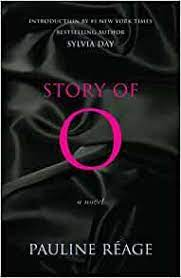
"The Story of O" by Anne Desclos under the pen name Pauline Réage is a French novel that explores the theme of sexual submission through the story of a woman named O. It was the Fifty Shades of Grey of its day. The novel details O's journey as she is taken from her mundane life and transformed into a willing submissive in a mysterious and secretive BDSM community. The novel is a challenging and often unsettling read, as it presents a world in which power dynamics and sexual desire are intertwined in complex and often disturbing ways. Desclos's writing is detailed and sensual, and she does not shy away from exploring the darkest aspects of human sexuality.
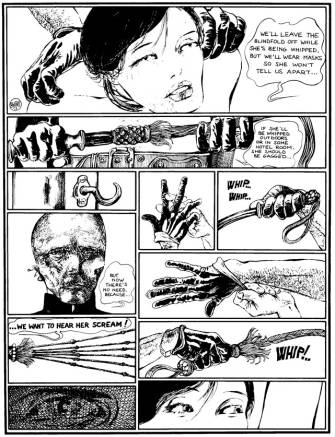
Despite its controversial subject matter, "The Story of O" is a well-written and thought-provoking novel that raises important questions about the nature of desire, power, and consent. The characters are complex and their motivations are often unclear, and the reader is left to grapple with their own reactions to the events depicted in the book. Guido Crepax's comic book adaptation of Pauline Raege's book matches up the Italian artist skills that bring up the book and characters into life through illustration. The Italian artist was well-known for his psychedelic/erotic style of art in his Valentina series, but The Story of O takes that to another level. Overall, "The Story of O" for those who are willing to engage with its challenging themes and confront their own desires and prejudices, it can be a deeply rewarding and eye-opening read.
3. Fear of Flying
"Fear of Flying" by Erica Jong is a groundbreaking feminist novel that explores the themes of sexuality, liberation, and women's desire. The novel follows the journey of Isadora Wing, a young writer struggling to find her place in the world and come to terms with her own desires.
One of the most impressive things about "Fear of Flying" is the way it presents a complex and nuanced portrait of a female character at a time when such representations were few and far between. Isadora is a fully realized and multidimensional person, and her struggles and desires are both relatable and unique.
In addition to its memorable and well-drawn protagonist, "Fear of Flying" is also notable for its frank and explicit depiction of sexuality. Jong's writing is bold and unapologetic, and she refuses to shy away from the messiness and complexities of desire.
In my idea, it is a must-read for anyone interested in feminist literature and the history of women's liberation. It is a seminal work that paved the way for subsequent generations of female writers and remains just as relevant and impactful today as it was when it was first published. Whether you're a fan of Jong's writing or a newcomer to her work, "Fear of Flying" is sure to leave a lasting impression.
4. American Psycho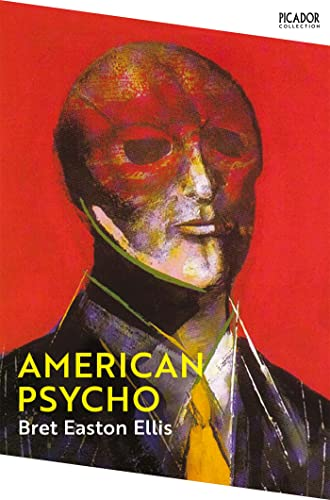
"American Psycho" by Bret Easton Ellis is a dark and controversial novel that depicts the violent, materialistic, and morally bankrupt world of a young Wall Street banker named Patrick Bateman. The novel is set in the excess-driven world of 1980s Manhattan and follows Bateman as he spirals out of control, committing horrific acts of violence while maintaining the appearance of a successful and well-respected member of society.
One of the most striking things about "American Psycho" is the way it uses Bateman's violent acts as a commentary on the emptiness and superficiality of modern life. The novel is a brutal indictment of the greed and materialism that define the world of high finance, and the characters are all shallow and morally bankrupt. At the same time, the writing in "American Psycho" is often exceptional, with Ellis using a detached, clinical style to present a world that is both repellent and mesmerizing. The novel is full of darkly comic moments, and the narrator's deadpan delivery only serves to heighten the sense of horror.
5. Crash
"Crash" by J.G. Ballard is a highly unconventional novel that explores the intersections of sexuality, technology, and death through the experiences of a group of people who find erotic pleasure in car crashes. The novel is set in a dystopian future where car crashes have become a fetishized form of sexual expression and the narrator, James Ballard, becomes drawn into this dangerous and deadly world.
One of the most striking things about "Crash" is the way it uses the car crash as a metaphor for the decay and dehumanization of modern society. Ballard's writing is often powerful and poetic, and he uses the imagery of the crash to explore deeper themes of mortality, desire, and the human condition.
At the same time, the writing in "Crash" is often explicit and disturbing, and the reader is faced with a world in which death and sexuality have become inextricably intertwined. The characters are all deeply flawed and often depraved, and the reader is left to grapple with their own reactions to the events depicted in the book.
So, here you are. Five books for Valentine's Day recommended by me! Hopefully next year, I'll add mine to the list :)
Let me know if you have any books to recommend following the same genre.
February 10, 2023
Metafiction: A Literary Experiment: What is Metafiction?
If you're studying your MFA in creative writing, or literature or are interested in postmodern literature, you may have heard of the term "Metafiction". In this post, we will define, understand, and analyze metafiction through examples. We will try to understand what is it, the history behind it and how can we use it in creative writing and in my case in Transgressive and postmodern fiction. Simply put, metafiction refers to a form of fiction that self-consciously acknowledges its status as a constructed literary artifact. It is a type of writing that is aware of itself as a story and addresses the conventions of storytelling and literary devices. This genre of writing is marked by a deliberate departure from traditional narrative techniques and conventions, blurring the lines between reality and fiction.
Definition
History
Stylistic Features
Forms of Metafiction
Tips for writing metafiction

Source: ,Poems About the Business of Being a Poet
DefinitionMetafiction is a type of fiction that focuses on the act of writing, blurring the lines between fiction and reality, and calling attention to its own artificiality. It is a style of writing that is self-referential and often uses elements of metanarrative, where the author comments on the process of writing and the story itself. This style of writing is meant to challenge the reader's perception of what is real and what is fiction, and to encourage them to question their own assumptions about the nature of storytelling.
History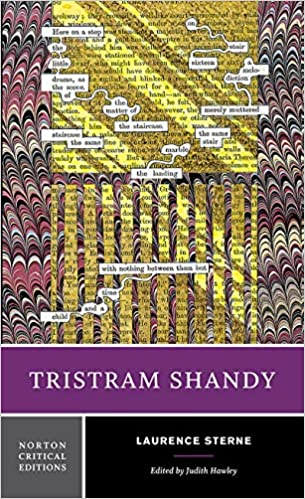
The term metafiction was first introduced by William H. Gass in 1970. He was a novelist, short story writer, essayist, critic, and philosophy professor from the United States. He wrote three novels, three short story collections, a novella collection, and seven volumes of essays, three of which received National Book Critics Circle Award nominations and one of which, A Temple of Texts (2006), received the Truman Capote Award for Literary Criticism. His novel The Tunnel, published in 1995, won the American Book Award. Middle C, his 2013 novel, won the William Dean Howells Medal in 2015.
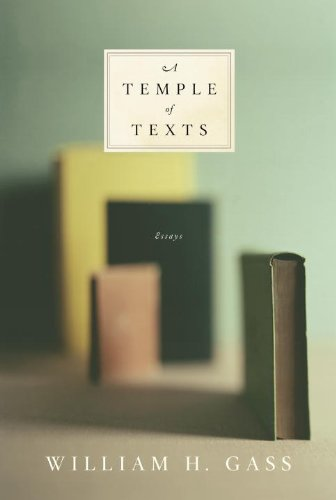
The roots of metafiction can be traced back to the works
of writers such as Laurence Sterne, who wrote the novel "Tristram Shandy" in the 18th century. In this novel, Sterne subverted traditional narrative techniques and called attention to the process of storytelling, making it a seminal work in the history of metafiction. Other writers who have been associated with metafiction include Jorge Luis Borges, Italo Calvino, and John Barth.
Stylistic Features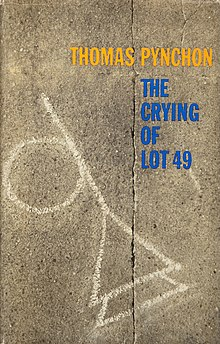
Metafiction is characterized by a variety of stylistic features, including self-referentiality, irony, and intertextuality. The author often breaks the fourth wall, acknowledging the reader and the fact that they are reading a work of fiction. The narrative may also be fragmented, non-linear, and self-contradicting, which serves to emphasize the artificiality of the story. Metafiction also frequently incorporates elements of metanarrative, where the author comments on the process of writing and the story itself.
Examples:Forms of Metafiction
Some well-known examples of metafiction include "The Crying of Lot 49" by Thomas Pynchon, "If on a winter's night a traveler" by Italo Calvino, and "Slaughterhouse-Five" by Kurt Vonnegut. Each of these works challenges the reader's understanding of reality and the nature of storytelling, using elements of metafiction to create a unique and thought-provoking literary experience.
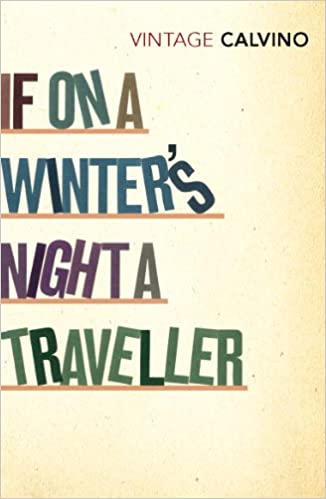
These forms of metafiction are not mutually exclusive and many works of metafiction incorporate elements from several of these forms. The use of these forms varies from author to author and can be used to create a wide range of different effects, from humor and irony to more serious meditations on the nature of reality and storytelling. Forms of Metafiction can be as followed:
Self-Referential Narratives: In this form of metafiction, the author refers directly to the story itself and the process of writing, calling attention to the artificiality of the narrative. Intertextuality: This form of metafiction incorporates elements from other texts, often in a self-referential manner, to comment on the nature of storytelling. Breaking the Fourth Wall: This is a form of metafiction in which the narrator or characters directly address the reader, acknowledging their presence and role in the story. Non-Linear Narratives: Metafiction often employs non-linear or fragmented narratives that challenge traditional storytelling structures and conventions. Parody and Satire: Metafiction often uses humor, irony, and satire to comment on the conventions of storytelling and the narrative itself. Magic Realism: This form of metafiction incorporates elements of fantasy and the supernatural into the story, blurring the lines between reality and fiction. Hyperreality: This form of metafiction explores the relationship between reality and media representation, often incorporating elements of media and technology into the story. Experimental Narratives: Metafiction often employs unconventional narrative techniques and styles, breaking away from traditional storytelling structures and conventions.Tips for how to write metafiction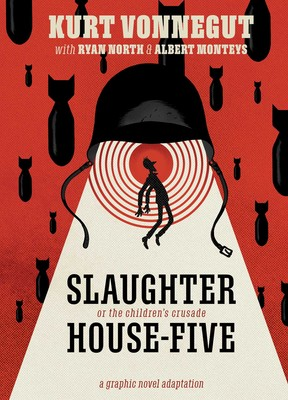
Metafiction is an experimental form of writing, and there are no strict rules to follow as a form belonging to postmodernism (I explained about this in "Decoding the Complexities of Postmodern Literature: Themes" article and "Transgressive Literature vs. Postmodern Literature: Challenging Norms and Conventions") The most important thing is to have fun with the process and allow yourself to experiment with different forms and techniques. For now, here are some tips for writing metafiction:
Experiment with Narrative Structure: Metafiction often employs unconventional narrative structures, such as non-linear storytelling or fragmented narratives. Consider experimenting with these structures to challenge traditional storytelling conventions. Self-Referentiality: Use self-referential elements in your writing, such as acknowledging the reader, breaking the fourth wall, or commenting on the process of writing. Play with Reality and Fiction: Explore the relationship between reality and fiction in your writing, blurring the lines between the two and calling attention to the artificiality of the story. Incorporate Intertextuality: Consider incorporating elements from other texts, such as references to other works or literary devices, to create a sense of intertextuality and comment on the nature of storytelling. Use Irony and Humor: Metafiction often employs humor, irony, and satire to comment on the conventions of storytelling and the narrative itself. Consider using these elements in your writing to create a sense of self-awareness and distance from the story. Experiment with Point of View: Consider experimenting with different points of view, such as first-person or second-person, to create a unique and self-referential narrative. Embrace Ambiguity: Metafiction often leaves room for interpretation and ambiguity, so consider leaving some elements of your story open to interpretation. Revise and Refine: Metafiction often requires a great deal of revision and refinement, as the author works to balance the self-referential elements with the story itself. Take the time to revise and refine your writing to ensure that the self-referential elements enhance the story and do not detract from it.Metafiction is a fascinating and innovative form of fiction that pushes the boundaries of conventional storytelling. By calling attention to the process of writing and the artificiality of the story, it invites the reader to question their own assumptions about reality and the nature of fiction. Whether you are a fan of this genre or not, it is undeniable that metafiction has had a profound impact on modern literature and continues to inspire new generations of writers. Tell us how your writing is related to metafiction?
February 8, 2023
Resisting Capitalism's Assault on Literature: How Postmodernism Can Preserve the Transgressive Lit
Capitalism has been the dominant economic system for several decades, and its impact has been far-reaching, affecting various aspects of our lives including literature. While capitalism has brought about great economic growth and prosperity, its influence on literature has been largely negative. Literature, especially in its traditional form, has always been about artistic expression, creativity, and storytelling. It is a means of exploring the human condition, reflecting on societal issues, and providing insights into the world around us. However, capitalism's focus on profit and commercialization has led to a homogenization of the literary landscape, with publishers seeking to produce books that will sell rather than those that will challenge or enlighten readers. In this article we will review capitalism impact on literature and how postmodernism can be a solution.

Source: ,How #MeToo revealed the central rift within feminism today
Capitalism's Negative Impact on LiteratureCapitalism's trend towards commercialization and commodification is having a profound impact on literature, stifling artistic expression, suppressing unique voices, and limiting the potential for meaningful storytelling. The result is a market flooded with formulaic, safe, and predictable books, which are often more concerned with ticking boxes and hitting market trends than pushing boundaries and providing meaningful narratives. This trend is particularly evident in the publishing industry, where book contracts are often awarded based on a writer's marketability, rather than the quality of their work. As a result, many talented and innovative writers struggle to get their work published, while others are forced to compromise their artistic vision to meet commercial demands.
Moreover, capitalism has led to the commodification of literature, with books and authors treated as products to be sold and marketed, rather than works of art to be appreciated and valued. This has resulted in a focus on mass-market appeal and commercial success, rather than on the content and themes of the work itself. The result is a homogenized literary landscape, where unique and diverse voices are suppressed, and the creative potential of writers is limited by the demands of the market.
The Suppression of Transgressive LiteratureTransgressive literature, which pushes boundaries and explores taboo or unconventional themes, is particularly vulnerable to the negative impact of capitalism. The transgressive genre is often seen as controversial and challenging, and as a result, it can be difficult for writers in this genre to get their work published and distributed. Furthermore, the commercialization of literature means that publishers are often reluctant to invest in works that may be seen as too risky or controversial, leading to a suppression of transgressive literature and the voices that write it.
The impact of capitalism on transgressive literature is particularly concerning because it is in these genres that we find some of the most groundbreaking and insightful commentary on society and the human condition. Transgressive literature has the power to challenge dominant narratives and provoke thought, leading to important social and cultural conversations. However, the suppression of these voices, brought about by the commercial demands of capitalism, means that we miss out on these vital contributions to our literary culture.
Hence, the trend of capitalism towards commercialization and commodification is having a negative impact on the transgressive genre of literature. The suppression of these voices, which are often the most insightful and challenging, undermines the literary landscape, stifling creativity, and limiting the potential for meaningful storytelling. We must work to protect transgressive literature and the writers who create it, and ensure that their voices are heard and valued, regardless of the commercial pressures of capitalism.
The Solution: Embracing Postmodernism in LiteratureFrom a postmodern perspective, one solution to the negative impact of capitalism on literature could be to challenge and subvert the dominant economic and cultural narratives that are imposed by capitalism. By embracing the principles of postmodernism, writers can reject the homogenizing and commodifying forces of capitalism and instead create works that are unique, diverse, and deeply rooted in their individual experiences and perspectives.
Postmodernism is characterized by its rejection of grand narratives and its embrace of multiple perspectives and interpretations. This approach can be applied to literature, where writers can challenge the dominant cultural and economic narratives that are imposed by capitalism, and instead create works that are grounded in their own experiences, values, and perspectives.
Furthermore, postmodernism emphasizes the importance of experimentation and subversion, and this can be applied to the creation of transgressive literature, where writers can push the boundaries of what is considered acceptable or taboo. In this way, postmodernism provides a framework for writers to challenge the negative impact of capitalism on literature, and to create works that are innovative, diverse, and deeply meaningful.
In conclusion, postmodernism provides a potential solution to the negative impact of capitalism on literature by offering a framework for writers to challenge dominant narratives, embrace experimentation and subversion, and create works that are grounded in their individual experiences and perspectives. By embracing the principles of postmodernism, writers can resist the homogenizing and commodifying forces of capitalism, and create a more diverse and vibrant literary landscape.
February 6, 2023
What are the Themes in Postmodern Literature?
Postmodernism in literature is a movement that emerged in the mid-20th century, characterized by a departure from the traditional forms and conventions of modernist literature. This type of literature often employs unconventional narrative structures, employs multiple points of view and fragmented imagery, and questions the authority of single, authoritative perspectives. It also frequently employs irony, parody, and appropriation to subvert cultural norms and question the artificiality of cultural categories.
In this post we will explore how postmodernism expands the subjective nature of reality and perception, and the limitations of language and representation. Through its focus on fragmentation, ambiguity, and self-referentiality, postmodern literature serves to deconstruct traditional forms and conventions, and offer a more nuanced and fragmented understanding of the world.
Fragmentation and Decentralization How Fragmentation and Decentralization is used Ambiguity and Irony How is irony used in postmodernism? Self-Referentiality How is Self-Referentialityused in postmodernism? Parody and Appropriation How is Parody and Appropriation in postmodernism? Playfulness and Experimentation Transgressive fiction themes in postmodernism context
Source: ,The Insurrection of Surrealism | The New Yorker
The themes of postmodern literature are varied, but often reflect the fragmentation, ambiguity, and self-referentiality that are hallmarks of the postmodern sensibility.
Fragmentation and DecentralizationOne of the key themes of postmodern literature is the fragmentation of reality and the decentralization of authority. In many postmodern works, traditional narrative structures are broken apart, and multiple points of view, fragmented imagery, and non-linear storytelling are employed. This fragmentation serves to disrupt the dominant, centralized narratives of the modernist era and question the authority of single, authoritative perspectives. The Christmas film "Love Actually" is an example of a text with fragmentation elements. The film takes us in and out of the lives of various characters, allowing some of their stories to intersect while others do not. Christmas and love are the only constants. This fragmentation is not necessarily negative in a postmodern context. But by playing with fragmentation and chaos, postmodernists typically celebrate them. This is in stark contrast to the previous literary movement, Modernism, which saw the modern world's complexities as tragic.
How Fragmentation and Decentralization is used in postmodernism?Postmodern texts frequently employ a stylistic device known as #pastiche to express the fragmentation and complexity of the modern world. The term combines ('paste' together) various elements. It is about mimicking the style of other texts and combining these styles in a playful, ironic way while ignoring traditional rules of style and genre.

Pastiche, in particular, frequently involves the blending of genres. Seth Grahame-Pride Smith's and Prejudice and Zombies (2009) is one example. In this text, the plot, setting, characters, and dialogue of Jane Austen's famous love novel Pride and Prejudice (1813) are heavily borrowed, but elements from the zombie and ninja genres are added. For example, Elizabeth Bennet, the main character, uses her martial arts skills to fight off zombies while looking for a suitable husband.
A pastiche can be either a tribute or a parody. While some pastiches honor the original text by copying it, others mock it. Pastiche and intertextuality sometimes overlap because pastiche is just one way of expressing intertextuality.
Ambiguity and Irony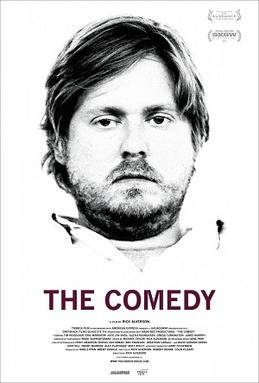
Postmodern literature AKA Post-irony is used to denote a state of confusion of serious and ironic intentions. terminology. We rarely refer to the opposite. This can take the form of deliberate confusion or reversals of expectations, and serves to highlight the limitations of language and the subjective nature of perception. In postmodern irony something is meant to be cynically ridiculed and not taken seriously, in New Simplicity something is meant to be taken seriously or "ironically". Whereas post-irony combines these two elements by either taking something absurd seriously or leaving it obscure. if something is meant to be ironic. (source)
Renowned comedian with a surreal sense of humor, Tim Heidecker portrays a man who leads a sarcastic lifestyle in his 2012 indie drama "The Comedy" (source). In literature, David Foster Wallace is often referred to as the founder of "postilonic" literature. His essays "E Unibus Pluram" (source) and "An Imaginary Future and a Remarkable Youth" describe and hope for literature that goes beyond postmodern cynicism.
How is irony used in postmodernism?In postmodernism, the idea that everything was done before is replaced by obsessive quoting and remaking, and the only way to stand out is, ironically, to quote - not just in words, but in style of clothing and appearance. A time when it's hard to be original because so many things were created. As a result, media and fashion trends reflect historical trends. This is the main cause of sarcasm in postmodernism. We try to use the old to become the new, which is not expected in other situations. This irony is a dominant element of postmodernism, but we often don't even realize it. For example, the reference to the Matrix in the movie Shrek was meant to appeal to older audiences (children's parents), but too mature for Shrek's primary audience (children) to understand. This is an interesting concept that stems from postmodernism.
Self-ReferentialityMany postmodern works are characterized by self-referentiality, in which the work refers to itself and its own processes of creation. "Self-reference in the media is interpreted as a symptom of postmodernity with its tendency towards historical self-reflection in scenarios in which even catastrophic current events are being interpreted as mere media events or even déjà-vu scenarios in a culture in which everything seems to have been said and shown." (source)
This can take the form of intertextual references, metafiction, or even the inclusion of the author's own commentary within the text. Self-referentiality serves to underscore the artificiality of the text and call attention to the ways in which literary works are constructed.
How is Self-Referentialityused in postmodernism?In the context of language, self-reference is used to indicate a statement that refers to itself or its referent. The most famous example of a self-referential sentence is the liar sentence. "This sentence is not true." Self-referencing is also commonly used in a broader context.
Parody and AppropriationPostmodern literature often employs parody and appropriation to challenge dominant cultural narratives and expose the artificiality of cultural categories. As Hutcheon explains, "Parody—often called ironic quotation, pastiche, appropriation, or intertextuality—is usually considered central to postmodernism, both by its detractors and its defenders" (source).
Parody has a "play" element in postmodernism. Parody itself is playful in the sense that it is a form of pluralizing the possible play of the system. In this way, postmodern parody puts old tools to new uses that surprise and confront the objectified world of humanism and history. (source) Fredric Jameson claimed that “the general effect of parody is, whether in sympathy or with malice, to cast ridicule.” (source)
In doing so, postmodern artists transform classical parodies. This can take the form of retelling familiar stories in new or absurd ways, or the appropriation of popular cultural icons or styles.
How is Parody and Appropriation in postmodernism?Parody deflates the original by imitating the style, style, or characteristics of a particular literary work/genre/author and applying the imitation to a base or inappropriate subject matter. Hutcheon explains,
Playfulness and Experimentation
It is rather like saying something whilst at the same time putting inverted commas around what is being said. The effect is to highlight, or "highlight," and to subvert, or "subvert," and the mode is therefore a "knowing" and an ironic—or even "ironic"—one. Postmodernism's distinctive character lies in this kind of wholesale "nudging" commitment to doubleness, or duplicity. In many ways it is an even-handed process because postmodernism ultimately manages to install and reinforce as much as undermine and subvert the conventions and presuppositions it appears to challenge. Nevertheless, it seems reasonable to say that the postmodern's initial concern is to de-naturalize some of the dominant features of our way of life; to point out that those entities that we unthinkingly experience as "natural" (they might even include capitalism, patriarchy, liberal humanism) are in fact "cultural"; made by us, not given to us. ( ,source ).
Postmodern literature is often characterized by a playful and experimental spirit, as writers seek to push the boundaries of conventional forms and conventions. This can take the form of unconventional narrative structures, avant-garde styles, or the incorporation of elements from popular culture.
In conclusion, postmodern literature is characterized by themes of fragmentation, ambiguity, self-referentiality, parody and appropriation, and playfulness and experimentation. These themes serve to challenge dominant cultural narratives, question the authority of traditional literary forms, and explore the subjective nature of reality and perception.
Transgressive fiction themes in postmodernism contextTransgressive fiction is a sub-genre of postmodern literature that explicitly challenges conventional norms and values through its themes and subject matter. Transgressive fiction often features characters and situations that are seen as taboo or outside of the bounds of acceptable behavior, and uses these elements to question and subvert cultural norms.
The themes of fragmentation, ambiguity, and self-referentiality that are common in postmodern literature are also present in transgressive fiction, but they are often taken to an even greater extreme. Transgressive fiction often employs graphic or explicit content to shock or disturb the reader, and to challenge conventional ideas about what is acceptable in literature.
In addition to these postmodern themes, transgressive fiction often explores themes of identity, power, and transgression, using characters and situations that challenge dominant ideas about gender, sexuality, and power relationships. This subversion of cultural norms serves to highlight the artificiality of cultural categories and question the power dynamics that underlie them.
In conclusion, transgressive fiction is a sub-genre of postmodern literature that builds on the themes of fragmentation, ambiguity, and self-referentiality, and adds a focus on the exploration of taboo and transgressive subject matter. Through its challenging of cultural norms and conventions, transgressive fiction serves as a powerful critique of dominant cultural narratives and power structures.
Do you know of any examples for these themes?
Decoding the Complexities of Postmodern Literature: Themes
Postmodernism in literature is a movement that emerged in the mid-20th century, characterized by a departure from the traditional forms and conventions of modernist literature. This type of literature often employs unconventional narrative structures, employs multiple points of view and fragmented imagery, and questions the authority of single, authoritative perspectives. It also frequently employs irony, parody, and appropriation to subvert cultural norms and question the artificiality of cultural categories.
In this post we will explore how postmodernism expands the subjective nature of reality and perception, and the limitations of language and representation. Through its focus on fragmentation, ambiguity, and self-referentiality, postmodern literature serves to deconstruct traditional forms and conventions, and offer a more nuanced and fragmented understanding of the world.
Fragmentation and Decentralization How Fragmentation and Decentralization is used Ambiguity and Irony How is irony used in postmodernism? Self-Referentiality How is Self-Referentialityused in postmodernism? Parody and Appropriation How is Parody and Appropriation in postmodernism? Playfulness and Experimentation Transgressive fiction themes in postmodernism context
Source: ,The Insurrection of Surrealism | The New Yorker
The themes of postmodern literature are varied, but often reflect the fragmentation, ambiguity, and self-referentiality that are hallmarks of the postmodern sensibility.
Fragmentation and DecentralizationOne of the key themes of postmodern literature is the fragmentation of reality and the decentralization of authority. In many postmodern works, traditional narrative structures are broken apart, and multiple points of view, fragmented imagery, and non-linear storytelling are employed. This fragmentation serves to disrupt the dominant, centralized narratives of the modernist era and question the authority of single, authoritative perspectives. The Christmas film "Love Actually" is an example of a text with fragmentation elements. The film takes us in and out of the lives of various characters, allowing some of their stories to intersect while others do not. Christmas and love are the only constants. This fragmentation is not necessarily negative in a postmodern context. But by playing with fragmentation and chaos, postmodernists typically celebrate them. This is in stark contrast to the previous literary movement, Modernism, which saw the modern world's complexities as tragic.
How Fragmentation and Decentralization is used in postmodernism?Postmodern texts frequently employ a stylistic device known as #pastiche to express the fragmentation and complexity of the modern world. The term combines ('paste' together) various elements. It is about mimicking the style of other texts and combining these styles in a playful, ironic way while ignoring traditional rules of style and genre.

Pastiche, in particular, frequently involves the blending of genres. Seth Grahame-Pride Smith's and Prejudice and Zombies (2009) is one example. In this text, the plot, setting, characters, and dialogue of Jane Austen's famous love novel Pride and Prejudice (1813) are heavily borrowed, but elements from the zombie and ninja genres are added. For example, Elizabeth Bennet, the main character, uses her martial arts skills to fight off zombies while looking for a suitable husband.
A pastiche can be either a tribute or a parody. While some pastiches honor the original text by copying it, others mock it. Pastiche and intertextuality sometimes overlap because pastiche is just one way of expressing intertextuality.
Ambiguity and Irony
Postmodern literature AKA Post-irony is used to denote a state of confusion of serious and ironic intentions. terminology. We rarely refer to the opposite. This can take the form of deliberate confusion or reversals of expectations, and serves to highlight the limitations of language and the subjective nature of perception. In postmodern irony something is meant to be cynically ridiculed and not taken seriously, in New Simplicity something is meant to be taken seriously or "ironically". Whereas post-irony combines these two elements by either taking something absurd seriously or leaving it obscure. if something is meant to be ironic. (source)
Renowned comedian with a surreal sense of humor, Tim Heidecker portrays a man who leads a sarcastic lifestyle in his 2012 indie drama "The Comedy" (source). In literature, David Foster Wallace is often referred to as the founder of "postilonic" literature. His essays "E Unibus Pluram" (source) and "An Imaginary Future and a Remarkable Youth" describe and hope for literature that goes beyond postmodern cynicism.
How is irony used in postmodernism?In postmodernism, the idea that everything was done before is replaced by obsessive quoting and remaking, and the only way to stand out is, ironically, to quote - not just in words, but in style of clothing and appearance. A time when it's hard to be original because so many things were created. As a result, media and fashion trends reflect historical trends. This is the main cause of sarcasm in postmodernism. We try to use the old to become the new, which is not expected in other situations. This irony is a dominant element of postmodernism, but we often don't even realize it. For example, the reference to the Matrix in the movie Shrek was meant to appeal to older audiences (children's parents), but too mature for Shrek's primary audience (children) to understand. This is an interesting concept that stems from postmodernism.
Self-ReferentialityMany postmodern works are characterized by self-referentiality, in which the work refers to itself and its own processes of creation. "Self-reference in the media is interpreted as a symptom of postmodernity with its tendency towards historical self-reflection in scenarios in which even catastrophic current events are being interpreted as mere media events or even déjà-vu scenarios in a culture in which everything seems to have been said and shown." (source)
This can take the form of intertextual references, metafiction, or even the inclusion of the author's own commentary within the text. Self-referentiality serves to underscore the artificiality of the text and call attention to the ways in which literary works are constructed.
How is Self-Referentialityused in postmodernism?In the context of language, self-reference is used to indicate a statement that refers to itself or its referent. The most famous example of a self-referential sentence is the liar sentence. "This sentence is not true." Self-referencing is also commonly used in a broader context.
Parody and AppropriationPostmodern literature often employs parody and appropriation to challenge dominant cultural narratives and expose the artificiality of cultural categories. As Hutcheon explains, "Parody—often called ironic quotation, pastiche, appropriation, or intertextuality—is usually considered central to postmodernism, both by its detractors and its defenders" (source).
Parody has a "play" element in postmodernism. Parody itself is playful in the sense that it is a form of pluralizing the possible play of the system. In this way, postmodern parody puts old tools to new uses that surprise and confront the objectified world of humanism and history. (source) Fredric Jameson claimed that “the general effect of parody is, whether in sympathy or with malice, to cast ridicule.” (source)
In doing so, postmodern artists transform classical parodies. This can take the form of retelling familiar stories in new or absurd ways, or the appropriation of popular cultural icons or styles.
How is Parody and Appropriation in postmodernism?Parody deflates the original by imitating the style, style, or characteristics of a particular literary work/genre/author and applying the imitation to a base or inappropriate subject matter. Hutcheon explains,
Playfulness and Experimentation
It is rather like saying something whilst at the same time putting inverted commas around what is being said. The effect is to highlight, or "highlight," and to subvert, or "subvert," and the mode is therefore a "knowing" and an ironic—or even "ironic"—one. Postmodernism's distinctive character lies in this kind of wholesale "nudging" commitment to doubleness, or duplicity. In many ways it is an even-handed process because postmodernism ultimately manages to install and reinforce as much as undermine and subvert the conventions and presuppositions it appears to challenge. Nevertheless, it seems reasonable to say that the postmodern's initial concern is to de-naturalize some of the dominant features of our way of life; to point out that those entities that we unthinkingly experience as "natural" (they might even include capitalism, patriarchy, liberal humanism) are in fact "cultural"; made by us, not given to us. ( ,source ).
Postmodern literature is often characterized by a playful and experimental spirit, as writers seek to push the boundaries of conventional forms and conventions. This can take the form of unconventional narrative structures, avant-garde styles, or the incorporation of elements from popular culture.
In conclusion, postmodern literature is characterized by themes of fragmentation, ambiguity, self-referentiality, parody and appropriation, and playfulness and experimentation. These themes serve to challenge dominant cultural narratives, question the authority of traditional literary forms, and explore the subjective nature of reality and perception.
Transgressive fiction themes in postmodernism contextTransgressive fiction is a sub-genre of postmodern literature that explicitly challenges conventional norms and values through its themes and subject matter. Transgressive fiction often features characters and situations that are seen as taboo or outside of the bounds of acceptable behavior, and uses these elements to question and subvert cultural norms.
The themes of fragmentation, ambiguity, and self-referentiality that are common in postmodern literature are also present in transgressive fiction, but they are often taken to an even greater extreme. Transgressive fiction often employs graphic or explicit content to shock or disturb the reader, and to challenge conventional ideas about what is acceptable in literature.
In addition to these postmodern themes, transgressive fiction often explores themes of identity, power, and transgression, using characters and situations that challenge dominant ideas about gender, sexuality, and power relationships. This subversion of cultural norms serves to highlight the artificiality of cultural categories and question the power dynamics that underlie them.
In conclusion, transgressive fiction is a sub-genre of postmodern literature that builds on the themes of fragmentation, ambiguity, and self-referentiality, and adds a focus on the exploration of taboo and transgressive subject matter. Through its challenging of cultural norms and conventions, transgressive fiction serves as a powerful critique of dominant cultural narratives and power structures.
Do you know of any examples for these themes?
January 30, 2023
Subverting Stereotypes: Portraying Women in Transgressive Fiction
If you've been reading my blog, you may know already that Transgressive fiction is a genre that pushes the boundaries of conventional literature and challenges societal norms. This genre often explores taboo topics and subverts traditional expectations, including those related to gender roles and representations of women. This genre that has gained popularity in recent years and is characterized by its bold exploration of taboo topics and its challenge to societal norms. This genre often goes against traditional expectations and provides alternative perspectives on issues such as gender, sexuality, and power.
In this article, I will examine how transgressive fiction can serve as a tool to fight stereotypes and provide alternative perspectives on women.
The Role of Stereotypes in Society The Harmful Impact of Stereotypes on Women Transgressive Fiction as a Tool for Subverting Stereotypes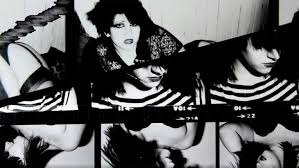 The Role of Stereotypes in Society
The Role of Stereotypes in SocietyStereotypes are a ubiquitous aspect of society and play a significant role in shaping our beliefs and expectations about the world. They are oversimplified generalizations about a group of people based on a single characteristic or trait, such as gender, race, or ethnicity. These stereotypes are perpetuated through various forms of media, such as film, television, and literature, and are often deeply ingrained in our cultural consciousness and unfortunately, Transgressive Fiction was not an exception even by many female authors in this genre.
To understand this, I would like to clarify what is stereotype: It is generally oversimplified and generalized based on a single characteristic or trait. Stereotypes are used to categorize people and provide a quick and easy understanding of a particular group, but they also often result in overgeneralization and oversimplification of complex individuals and communities. Such stereotypes have a profound impact on our thoughts, beliefs, and attitudes towards different groups of people. They are often deeply ingrained in our cultural consciousness, and it can be difficult to recognize and challenge them.
This means that the stereotypes can have a harmful impact on those who are the subject of them, leading to discrimination, prejudice, and marginalization. For example, harmful stereotypes about certain racial or ethnic groups can lead to institutionalized discrimination, while harmful gender stereotypes can restrict women's career and life opportunities. On the other hand, it can have a significant impact on how people perceive themselves and their place in society. For example, internalized stereotypes about women's abilities or intellectual capabilities can lead to lower self-esteem and self-worth, and can contribute to a lack of representation in fields traditionally dominated by men.
So, as a transgressive author or reader it is important to challenge and reject harmful stereotypes, and to strive for a more equitable and just society where individuals are valued for their unique qualities and abilities, rather than being judged based on generalizations and oversimplifications.
The Harmful Impact of Stereotypes on WomenWomen have historically been subject to numerous harmful stereotypes that limit their potential and define their roles in society. For example, women are often portrayed as emotional, passive, and dependent, which can lead to discrimination in the workplace and a lack of representation in positions of power. Additionally, harmful stereotypes related to body image, sexuality, and domestic responsibilities can further marginalize and harm women.
Female gender stereotypes are particularly problematic and limit women's opportunities in many areas of life. For example, the stereotype that women are emotional and nurturing, but not capable of handling leadership positions, can prevent them from advancing in their careers. Similarly, the stereotype that women are less intelligent than men can lead to a lack of representation in male-dominated fields, such as STEM. Internalized female gender stereotypes can also have a damaging impact on women's self-esteem and self-worth. For example, a woman who internalizes the stereotype that women are not good at mathematics may believe that she is not capable of pursuing a career in science or technology, regardless of her actual abilities.Moreover, these stereotypes often result in discrimination and marginalization of women in various areas of life. For example, women who do not conform to traditional gender roles, such as staying at home to care for their children, may face criticism or even harassment and this may vary from country to country. Women of color may also face intersecting stereotypes based on both their gender and their race, which can further exacerbate the impact of these harmful beliefs.
Transgressive Fiction as a Tool for Subverting StereotypesAs transgressive fiction can be an incredibly powerful tool for subverting stereotypes hence it can be particularly a voice for women and other marginalized groups. One of the ways in which transgressive fiction subverts stereotypes is by providing alternative perspectives and narratives. For example, a transgressive novel may present a female protagonist who defies traditional gender roles, such as a woman who is aggressive and sexual rather than passive and nurturing. By presenting these alternative perspectives, transgressive fiction challenges dominant cultural narratives and the stereotypes associated with them.
Transgressive fiction also provides a space for authors to express themselves freely, regardless of social and cultural norms. This allows writers to create complex and nuanced characters who defy traditional expectations, and to challenge stereotypes and dominant cultural narratives. For example, a transgressive novel may feature a female character who is both vulnerable and strong, or a character who is both sexual and intelligent. These characters challenge traditional stereotypes by presenting a more diverse and complex view of women and their experiences. Furthermore, it can also be used to deconstruct and critique the underlying power dynamics and oppressive systems that perpetuate stereotypes. By examining the ways in which these systems contribute to and reinforce stereotypes, transgressive fiction can serve as a tool for critiquing and subverting these harmful beliefs.
In transgressive fiction, women should often portrayed as more than just objects of desire or passive recipients of violence. Instead, they depicted as strong, resilient, and capable of agency and resistance. Through transgressive fiction, women can reclaim their bodies and sexuality, challenge traditional gender roles, and assert their independence and power. An examples of Transgressive Fiction Portraying Women written by a female author is Margaret Atwood's "The Handmaid's Tale." In this novel, Atwood portrays women as strong and resilient, despite the oppressive regime they are subjected to. Another example is Angela Carter's "The Bloody Chamber," a collection of reinterpreted fairy tales that challenge traditional gender roles and expectations.
ConclusionTransgressive fiction provides a powerful platform for subverting stereotypes and challenging traditional representations of women. By exploring taboo topics and pushing against societal norms, transgressive fiction can provide alternative perspectives and help to create a more equitable and just society. As we continue to strive for equality and representation, it is crucial that we continue to challenge harmful stereotypes and promote alternative perspectives through literature and other forms of media.
January 24, 2023
Confidence to Write: How do I get confidence to write? Notes from Tobin Elliott
"We don't see things as they are, we see them as we are."
– Anais Nin
When asked if I had a topic for this guest blog, I immediately thought back to several conversations I’d recently had with different writers, all at very different levels of writing experience. And when I thought it through, every single conversation came down to confidence.
In one case, a writer who, in their own words, has “a bunch of novels, and hundreds of short stories” and, despite winning awards for their writing, has never considered publishing them. Why? “I don’t have any confidence in any of it.”
A second writer told me that they were “really pumped” to start digging into their novel. They mentioned that they talked to a friend about one of the aspects of the story, and that “friend”—and yes, I’ll purposely put quotes around that—was dismissive. This same writer had, weeks earlier, posted a fantastic quote on social media, only to have another friend rip it to shreds. In both cases, it served to deflate the writer and leave them questioning their abilities.
A third writer, who has ghost written multiple books but is now focusing on their own ideas, regularly expresses concerns that the story isn’t “good enough” or, worse yet, that they are “not good enough a writer to do it justice.”
So, a range of experience levels and confidence levels, from zero, to very little, to a somewhat fragile high level.

PIGENIUS CAVE, TRANSGRESSIVE, Kühlhaus Berlin, Sep 2022 ©BENJAKON ( ,source )
"Successful people have fear, successful people have doubts, and successful people have worries. They just don't let these feelings stop them."
– T. Harv Eker
I think that many authors don’t consider what they do as art. But it is art, as surely as drawing or sculpting or creating music is art. And the thing to remember with art? We all do it differently. We all have our own styles, our own subjects and themes we return to again and again, we all have our preferred genres, and definitely our own ways of arranging those twenty-six letters and punctuation marks to say what we want to say.
It’s subjective as hell. Some are going to love what you do, some are going to hate it.
And I think this is where the confidence angle comes in. We look at some other admired author and we want to be—if not just like them—then at least as good as them. And we want a big audience to love what we do.
I have had a few interesting experiences that have changed my confidence level.
At one reading of my work, I had two people stand up and run out of the room. A few weeks ago, I had a family member tell me she put down my novel less than halfway through, and would not be reading anything else of mine, because, she said, “I can only tolerate so much of your madness.” And, about a week ago, I had a reviewer message me. They’d just gotten to a certain part in my novel and said they couldn’t read any further, and they apologized.In all three cases, perhaps I should have been upset, or worried, or lost confidence in my writing. However, I didn’t. Instead, I took all three as compliments.
I’m a horror writer. I horrified all four of those people enough that they couldn’t continue.
I won.
Here’s my advice to any writer suffering a crisis of confidence…
Be confident of your progress
When I used to teach Creative Writing, I would take a good look at all the students, wondering who would be in the one-half to two-thirds that would discover how much work writing is and abandon the course.
So, if you’ve managed to actually complete some work, it may or may not be good. But, the big thing to realize here is, you’ve already accomplished more than most writers. That’s something to celebrate. But now, you’ll have to find a way to get some unbiased, brutal feedback on them if you want to continue growing as an author. But you’ve written…and completed a tale. Have confidence in that.
Be confident of your talent
You may be at a stage where you have a fantastic idea, but you’re not sure you have the requisite skill and ability to write it. I think we all go through that at one point or another. Read stories and novels that cover similar ground to see what works and what doesn’t. Read good and bad stuff and learn from it.
But remember, this is your idea. No one else’s. Only you can write it. Oh, and by the way, remember that Hemingway said, “The first draft of anything is shit.” Give yourself permission to write bad stuff, because you can always fix it with the rewrites.
"Don't be distracted by criticism. Remember—the only taste of success some people have is when they take a bite out of you."
– Zig Ziglar
Be confident of your method
You may be pumped about writing! Yay you! Be warned that there’s always someone out there ready to tell you you’re doing it wrong. There’s always someone who—yes, I believe this—lacks confidence in their own work, and instead of working on that, they’d rather bring others down to their level of insecurity. I’ve seen it too many times to not believe this is true.
Avoid these confidence vampires at all costs, or, at the very least, don’t buy what they’re selling you, because you know better. You are pumped about it. Don’t lose that energy. Just get your butt in a chair and get words down. That’s all the validation you need.
Writing a compelling story—creating art—isn’t for the faint of heart. You’re taking a large piece of yourself and committing it to paper, then sending it out for all the world to see. That takes some confidence.
When some of your readers find what you’ve created is not their cup of tea, that’s fine. It’s art. You should write to please yourself first. Not everyone else will love it.
But some will. Some will be seeking out that exact thing—that incredible piece—that you have shared of yourself, and the words will resonate with them, and reach down into their soul.
And once you know you can make that connection, you will have the confidence to continue doing what you should be doing.
“What would you attempt to do if you knew you would not fail?”
– Robert Schuller
More about Tobin Elliott
[image error][image error][image error]January 23, 2023
Transgressive Literature vs. Postmodern Literature: Challenging Norms and Conventions
Transgressive literature and postmodern literature are two literary movements that have challenged traditional norms and conventions in literature. Both movements have gained significant attention and have been influential in shaping contemporary literature. While both movements share some similarities in their approach to challenging traditional norms and conventions, they are distinct in their goals and methods. In this article, we will explore the similarities and differences between transgressive literature and postmodern literature and examine the unique characteristics of each movement. We will also look at some examples of authors and works that are considered to be part of these movements. Whether you are a literature student, a writer, or just a reader looking for something different, this article will provide an in-depth understanding of these two movements and their impact on contemporary literature.
What is Transgressive Literature? What is Postmodern Literature? Transgressive literature and postmodern literature similarities Transgressive literature and postmodern literature differences A Comparison of Female-Authored and Male-Authored Transgressive and Postmodern Literature Infographic
Marilyn Diptych by Andy Warhol, 1962, via Tate, London (left); with Self-Portrait by Andy Warhol, 1986, via Christie’s (center); and Pink Panther by Jeff Koons, 1988, via MoMA, New York (right) ( ,source )
What is Transgressive Literature? What is Postmodern Literature?Transgressive literature and postmodern literature are both literary movements that challenge traditional norms and conventions. However, they do so in different ways and for different reasons.
Transgressive literature, also known as transgressive fiction, is a genre of literature that pushes the boundaries of what is considered socially and morally acceptable. This can include taboo subjects such as violence, sex, and drug use. The goal of transgressive literature is to shock and disturb the reader, and to question societal norms and values. Examples of transgressive literature include the works of authors such as Chuck Palahniuk, Bret Easton Ellis, and Irvine Welsh.
Postmodern literature, on the other hand, is characterized by its rejection of traditional narrative structures, its use of metafiction, and its emphasis on the destabilization of meaning. Postmodern literature questions the nature of reality, and the role of the author and the reader. The goal of postmodern literature is not to shock the reader, but to challenge their understanding of the world. Examples of postmodern literature include the works of authors such as Samuel Beckett, Thomas Pynchon, and Don DeLillo.
So, Transgressive literature and postmodern literature are both literary movements that challenge traditional norms and conventions, but they do so in different ways and for different reasons. Transgressive literature aims to shock and disturb the reader, while postmodern literature aims to challenge their understanding of the world.
Transgressive literature and postmodern literature similaritiesTransgressive literature and postmodern literature share some similarities in their approach to challenging traditional norms and conventions. Some of the similarities include:
 Reject traditional narrative structures and conventions in literature. Questioning the nature of reality and the role of the author and the reader. Challenging societal norms and values. Using unconventional techniques and styles to convey their message. Being avant-garde and experimental in nature. Significant attention and have been influential in shaping contemporary literature. Characterized by their use of irony, satire, and parody, which are used to question and subvert traditional beliefs and conventions. Been associated with the idea of challenging the status quo, and to make the readers think more critically and reflect on their own beliefs and perceptions.Transgressive literature and postmodern literature differences
Reject traditional narrative structures and conventions in literature. Questioning the nature of reality and the role of the author and the reader. Challenging societal norms and values. Using unconventional techniques and styles to convey their message. Being avant-garde and experimental in nature. Significant attention and have been influential in shaping contemporary literature. Characterized by their use of irony, satire, and parody, which are used to question and subvert traditional beliefs and conventions. Been associated with the idea of challenging the status quo, and to make the readers think more critically and reflect on their own beliefs and perceptions.Transgressive literature and postmodern literature differencesTransgressive literature and postmodern literature have distinct differences in their goals and methods of challenging traditional norms and conventions. Some of the differences include:
The main goal of transgressive literature is to shock and disturb the reader, while the main goal of postmodern literature is to challenge the reader's understanding of the world. Transgressive literature often deals with taboo subjects such as violence, sex, and drug use, while postmodern literature deals with more abstract concepts such as the nature of reality and the role of the author and the reader. Transgressive literature is more focused on breaking societal norms and conventions, while postmodern literature is more focused on deconstructing and subverting traditional narrative structures and conventions. Transgressive literature is often considered to be more visceral and confrontational, while postmodern literature is often considered to be more cerebral and abstract. Transgressive literature is often associated with the "transgression" of established moral and cultural codes, Postmodern literature is more associated with the idea of challenging the established literary canon and conventions. Transgressive literature is often considered to be more controversial and provocative, while postmodern literature is often considered to be more experimental and challenging. Transgressive literature is often associated with the idea of breaking taboos, while postmodern literature is associated with the idea of questioning and subverting traditional beliefs and conventions.A Comparison of Female-Authored and Male-Authored Transgressive and Postmodern LiteratureExamples of Transgressive literature include the works of Chuck Palahniuk, Bret Easton Ellis, and Irvine Welsh, while examples of postmodern literature include the works of Samuel Beckett, Thomas Pynchon, and Don DeLillo.
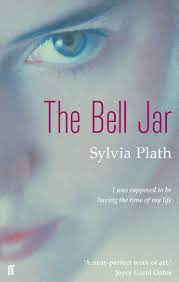
"The Bell Jar" by Sylvia Plath: This novel is considered to be both postmodern and transgressive. It uses a confessional style to challenge traditional narrative conventions and question the nature of reality, while also dealing with taboo subjects such as mental illness, suicide, and female sexuality. The novel also challenges societal norms and values with regards to gender roles, and it's considered a feminist novel in its depiction of a woman struggling to find her place in a patriarchal society.
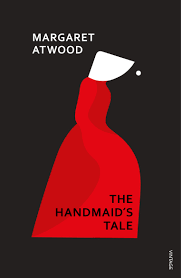
"The Handmaid's Tale" by Margaret Atwood: This novel is also considered to be both postmodern and transgressive. It uses metafiction and self-referentiality to challenge traditional narrative conventions, while also depicting a dystopian society in which women are stripped of their rights and forced into reproductive slavery. The novel also challenges societal norms and values with regards to gender roles, and it's considered a feminist novel in its depiction of a woman struggling to survive in a patriarchal society.
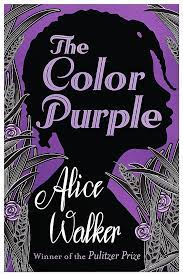
"The Color Purple" by Alice Walker: This novel is considered to be both postmodern and transgressive. It uses a non-linear narrative structure to challenge traditional narrative conventions and question the nature of reality, while also dealing with taboo subjects such as race, poverty, and domestic abuse. The novel also challenges societal norms and values with regards to gender roles and race, and it's considered a feminist and an anti-racist novel in its depiction of a woman of color struggling to find her place in a white-dominated society.
Male Authors

"Fight Club" by Chuck Palahniuk: This novel is considered to be both postmodern and transgressive. It deconstructs traditional narrative structures and questions the nature of reality, while also dealing with taboo subjects such as violence, masculinity, and mental illness. The novel's themes of consumerism, masculinity and mental health are also satirized by its postmodern elements, as well as its transgressive content.
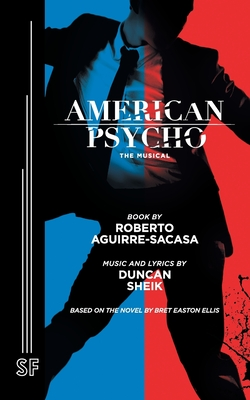
"American Psycho" by Bret Easton Ellis: This novel is also considered to be both postmodern and transgressive. It uses metafiction and self-referentiality to challenge traditional narrative conventions, while also depicting graphic violence and exploring taboo themes such as sex and murder. The novel also uses a postmodern style to question the nature of reality, and the role of the author and the reader.
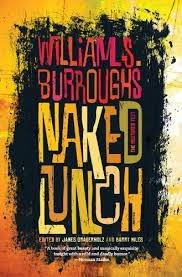
"Naked Lunch" by William S. Burroughs: This novel is considered to be both postmodern and transgressive. It rejects traditional narrative structures and uses unconventional techniques such as cut-up and collage to create a disjointed, dreamlike narrative. The novel also deals with taboo subjects such as drug use and homosexuality, and challenges societal norms and values. The postmodern elements in the book such as its non-linear narrative, its use of unconventional techniques, and its questioning of reality and the role of the author and reader, makes it a work that can be considered both postmodern and transgressive.
Have you read these books? Comment below other examples of such literature.
January 16, 2023
WOKE culture is ASLEEP: Transgressive Literature in the Era of Woke
In recent years, there has been a growing movement in literature and media known as "woke culture." This term refers to a heightened awareness and sensitivity to issues of social justice, particularly those related to race, gender, and sexuality. Many writers and creators in the "woke" movement strive to create work that challenges the status quo and promotes marginalized voices. In my opinion, WOKE can be detrimental to transgressive literature. Transgressive literature is about pushing boundaries and challenging societal norms, but woke culture often imposes strict guidelines on what can and cannot be written about, effectively censoring transgressive literature.
 Woke vs. Transgressive Literature
Woke vs. Transgressive LiteratureTransgressive fiction is a genre of literature that pushes the boundaries of societal norms and conventions. It often deals with taboo or controversial subjects such as sexuality, violence, and mental illness. Some notable examples of transgressive fiction include American Psycho by Bret Easton Ellis and Fight Club by Chuck Palahniuk.
In recent years, there has been a growing movement in literature and media known as #woke culture. This term refers to a heightened awareness and sensitivity to issues of social justice, particularly those related to race, gender, and sexuality. Many writers and creators in the "woke" movement strive to create work that challenges the status quo and promotes marginalized voices.
While transgressive fiction and woke culture may seem similar on the surface, there are some important differences between the two. #Transgressive fiction often deals with #taboo or controversial subjects in a shocking or confrontational way, whereas woke culture is more focused on promoting marginalized voices and challenging societal norms.
There is a lot of overlap between the two, but it is not a requirement for transgressive fiction to be "woke" and vice-versa. Some transgressive fiction may not be particularly "woke" in its perspective, and some works that are considered "woke" may not push the boundaries in the same way that transgressive fiction does. So, however, transgressive fiction and woke culture are two distinct, but they somehow are movements in literature and media that both have the power to challenge societal norms and promote change. While transgressive fiction often deals with taboo or controversial subjects in a shocking or confrontational way, woke culture is more focused on promoting marginalized voices and challenging societal norms. Both movements have their place in literature and media, and both are important for creating meaningful conversations and promoting change.
Negative Impacts of WOKE on Transgressive LiteratureOne of the main issues with woke culture is that it promotes a certain type of politically correct narrative. This can be stifling for writers and creators, who may feel pressured to conform to certain narrative guidelines in order to be deemed "woke" or socially acceptable. This can lead to a homogenization of literature, where all stories must conform to a certain narrative in order to be deemed acceptable. In this way, woke culture can be seen as a form of censorship, as it limits the types of stories that can be told and the ways in which they can be told.
Another issue with woke culture is that it can be divisive. By promoting a certain type of narrative and labeling certain ideas or perspectives as unacceptable, it can create an "us vs. them" mentality. This can lead to a lack of diversity in literature and media, as well as a lack of understanding and empathy between different groups.
Transgressive literature, on the other hand, is about exploring all types of stories and perspectives, regardless of whether they align with mainstream or socially acceptable ideas. Transgressive literature is not afraid to tackle taboo or controversial subjects and challenge societal norms, regardless of whether it is considered politically correct or not.
In conclusion, I believe while woke culture may have had noble intentions, it can be detrimental to transgressive literature. Woke culture promotes a certain type of #politically #correct #narrative and can be seen as a form of #censorship, stifling creativity and limiting the types of stories that can be told. It can also be divisive and lead to a lack of diversity in literature and media. Transgressive literature, on the other hand, is about exploring all types of stories and perspectives, regardless of whether they align with mainstream or socially acceptable ideas. It is important to remember that literature should be free to explore all types of stories and perspectives, not just those that are deemed "woke" or socially acceptable.



